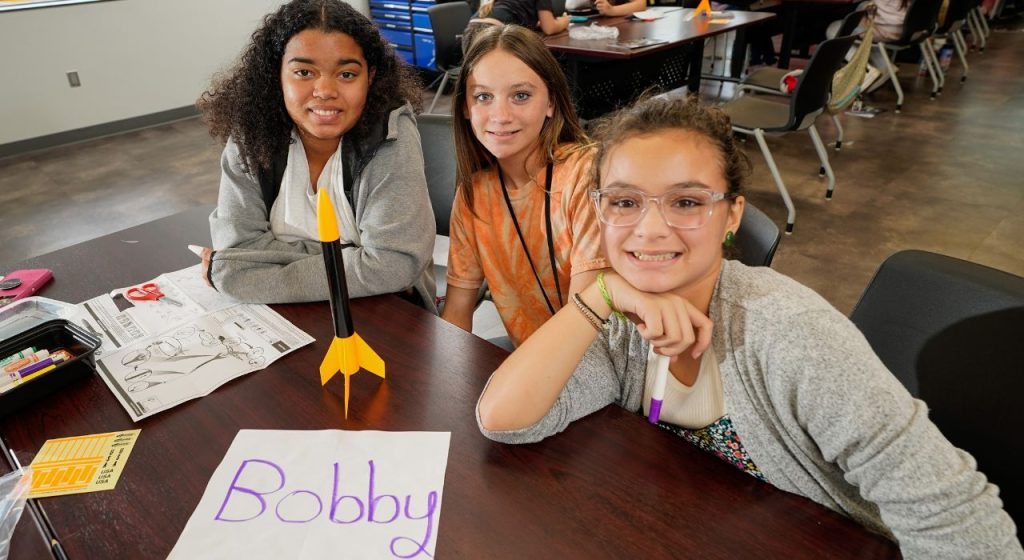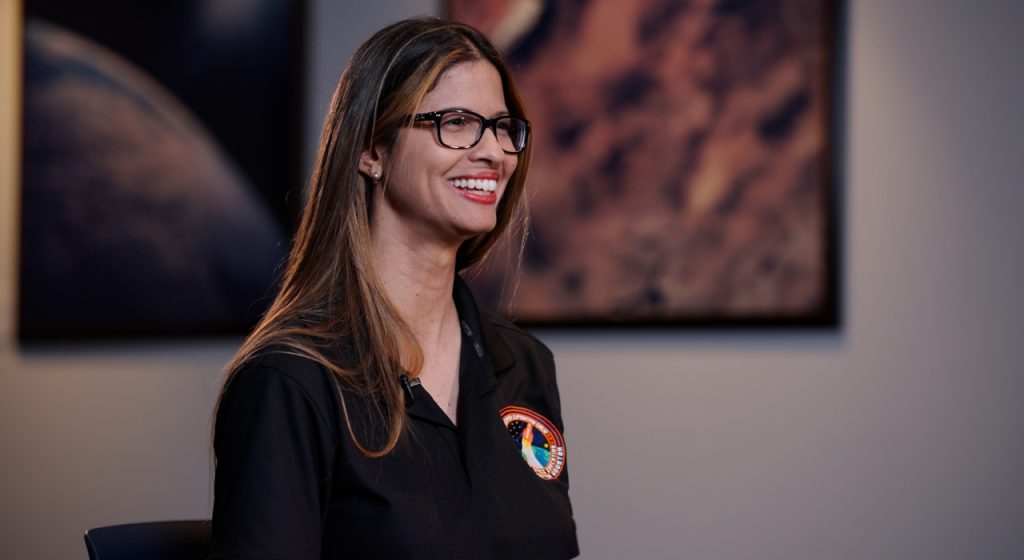
Though the center is temporarily closed, we are still passionate about sharing science and space exploration. In this series, we’ll take a quick tour through a science or space topic. Today we are exploring the Kuiper Belt.
Where do comets come from? Where does the dwarf planet Pluto reside? Where do the icy bodies and other leftovers from our solar system collect? In the doughnut-shaped region of space beyond Neptune, the outer edges of our solar system, called the Kuiper Belt.
What is the Kuiper Belt?
The Kuiper Belt is a region of space. The inner edge begins at the orbit of Neptune, at about 30 AU from the Sun. (1 AU, or astronomical unit, is the distance from Earth to the Sun.) The outer edge continues outward to nearly 1,000 AU, with some bodies on orbits that go even further beyond.
There are bits of rock and ice, comets and dwarf planets in the Kuiper Belt. Besides Pluto and a bunch of comets, other interesting Kuiper Belt Objects are Eris, Makemake and Haumea. They are dwarf planets like Pluto.
The Kuiper Belt Objects (KBOs) are all small because they might have come together to form a planet had Neptune not been there. Instead, Neptune’s gravity stirred up this region of space so much that the small, icy objects there weren’t able to coalesce into a large planet.

These panels show the relative scale of (clockwise from top left): The inner solar system, outer solar system, orbit of Sedna in the scattered disk, and the Oort Cloud.
Who discovered it?
The Kuiper Belt is named for astronomer Gerard Kuiper, who published a scientific paper in 1951 that speculated about objects beyond Pluto. However, he didn’t actually discover it. Putting together the data to officially recognize it and its components took many scientists many years. From when Pluto was discovered in 1930, it would take another 62 years until 1992 for scientists to recognize how populated the region is with objects now called KBOs. However, since Kuiper’s first proposed the idea, and his ideas were well-known, the discovery was mostly attributed to him and the region received his name.
However, some researchers prefer to call it the Trans-Neptunian Region.
Can you see it?
It’s vast and mysterious, cold and dark. But you can see the objects within it. What does it include? It’s primarily made up of icy objects, dwarf planets, dust, and comets. The total mass of all the material in the Kuiper Belt today is estimated to be no more than about 10 percent of the mass of Earth. A fairly large number of KBOs either have moons—that is, significantly smaller bodies that orbit them—or are binary objects. Binaries are pairs of objects that are relatively similar in size or mass that orbit around a point (a shared center of mass) that lies between them.
How is it studied?
From earth, it is studied by astronomers. From space, spacecraft explore it and send images and data. The first spacecraft to enter the Kuiper Belt region was NASA’s Pioneer 10 spacecraft, when it crossed into the space beyond Neptune’s orbit in 1983. But that spacecraft didn’t visit any of the icy worlds in the region—none other than Pluto had been discovered yet. The first spacecraft to actually visit an object in the Kuiper Belt was NASA’s New Horizons, which flew by Pluto and its moons in July 2015. The New Horizons spacecraft flew past the ancient Kuiper Belt object Arrokoth (2014 MU69) on Jan. 1, 2019, providing humankind’s first close-up look at one of the icy remnants of solar system formation
Why is it important?
One of the most important aspects to the Kuiper Belt is the look it offers into the formation of our solar system. By studying the Kuiper Belt, scientists may be able to better understand how planets and planetesimals – the building blocks of the planets – were formed. The New Horizons spacecraft sent data about the ancient Kuiper Belt object Arrokoth (2014 MU69). Scientists said just as fossils reveal the formation of life on earth, objects such as Arrokoth show how planets formed in space.
The Kuiper Belt is a rich source of learning more about objects in our solar system. So far, over 2,000 KBOs have been cataloged. Researchers believe these are only a tiny fraction of the total number of objects scientists think are out there. In fact, astronomers estimate there are hundreds of thousands of objects in the region that are larger than 60 miles (100 kilometers) wide or larger.
The Kuiper Belt is a region we’re still just beginning to explore and our understanding is still evolving. The best information has come from recent missions, so there is much to discover and learn.







